On the Nature Ramble on Monday, 12th June – Queen’s Birthday Holiday – a group of 10 of us went looking for fungi, led by Neil Tucker.
Our first stop was along Forest Road. A kangaroo had died at this spot, and there were bones scattered around, on which were growing Hebeloma aminophilum.
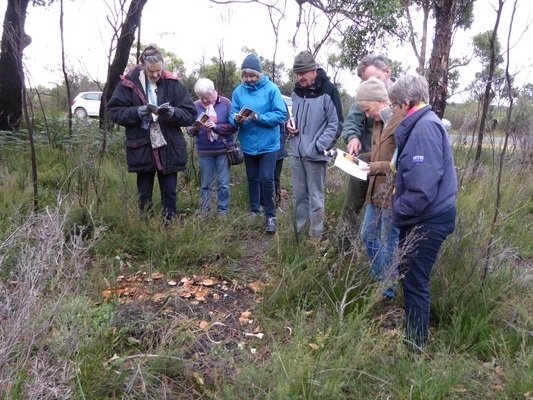
Inspecting Hebeloma
This fungus is always associated with areas where there have been animal carcasses, or meat scraps and bones in camping areas, and is known as the Ghoul Fungus.
Our next stop was Gherang Gherang Bushland Reserve, where we saw many small, brownish fungi with pink gills – Laccaria sp.
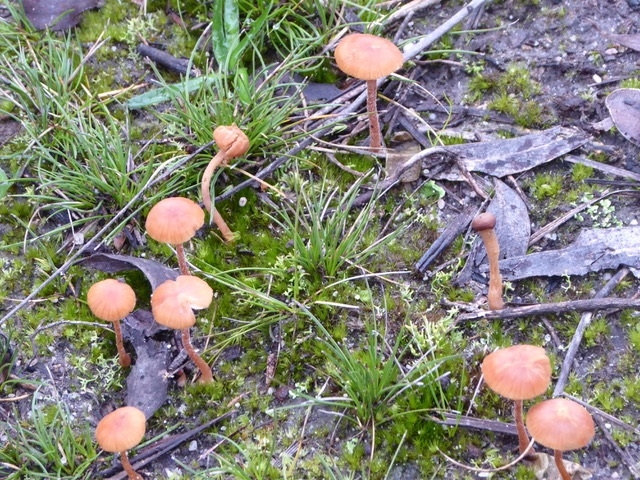
Laccarias sp
Nearby were some Coltricia cinnamomea, a polypore. It was stalked like a mushroom, but was thin & firm, with pores underneath.
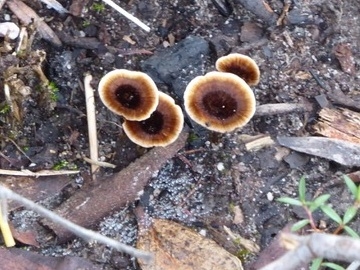
Coltricia cinnamomea
Growing in the fork of a Eucalypt was a large, tough brown fungus, also with pores instead of gills, and attached by a short lateral stem. At the base of the same tree was a bright yellow two-layered fungus, weeping with moisture, and again with pores. They were probably both Rigidoporus laetus, but they looked different.
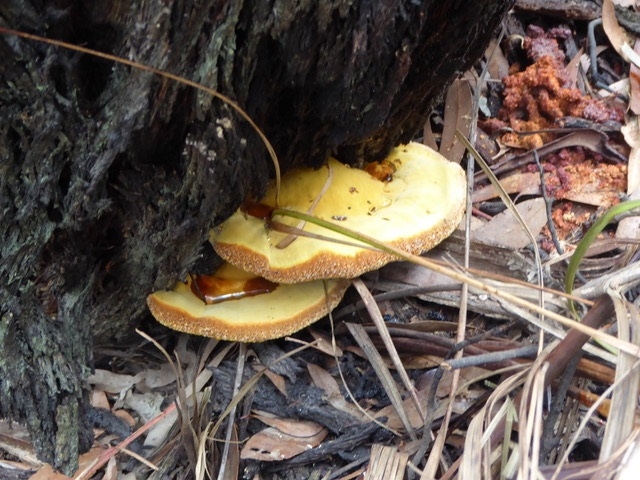
Rigidoporus laetus
We saw a gilled mushroom which was a pinkish colour – Russula rosea.

Russula rosea
Two interesting Coral Fungi were observed, one brown and one yellow, and are known as Ramaria.
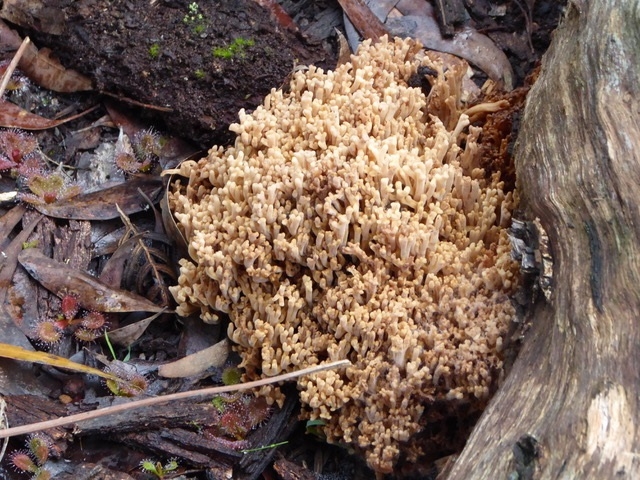
Ramaria sp
The yellow one is Ramaria lorithamnus. It is obvious how they got their common name!

Ramaria lorithamnus
A great find towards the end of the walk was a patch of Stinkhorns – Mutinus cartilagineous.

Mutinus cartilagineous
These fungi appear as white ‘eggs’, then the central area breaks through and emerges as a finger shape, and contains the spores in a brown slime. This is the part of the fungus which smells, and is to attract flies and other insects which eagerly consume the slime. The spores are then spread after passing through the insect. This is an uncommon fungus and was a great find.
The morning was altogether a fascinating and educational experience. Thanks Neil for your expertise.
Photos by Ros Gibson and Richard Hartland